Shimano GE900 Shoes
Test Locations: Washington, British Columbia
Test Duration: 3 months
Reviewer: 6’, 175 lb / 183 cm, 79.4 kg
Size Tested: EU 44
Blister’s Measured Weight per shoe (EU 44): 457 and 458 g
Upper: Synthetic leather
Closure: BOA + velcro strap
Stated Features:
- BOA Fit System L6 dial with instep strap
- Durable synthetic leather upper
- Integrated neoprene gaiter
- Carbon reinforced TORBAL 2.0 midsole
- ULTREAD GE Outsole
- Extended SPD Pedal Channel
- Volume Trail Last
- Colors: Black, Olive
Pedals Used: Shimano Saint, Shimano XTR Trail, HT X2, HT X3, HT T2
MSRP: $225
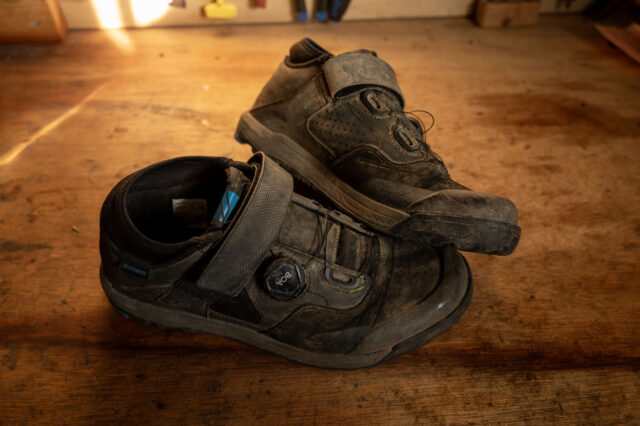
Intro
I’ve long been a fan of the Shimano AM9 series of shoes — especially the final model in that lineage, the AM903 — and have several friends who swear by its lighter, more Trail-oriented sibling, the ME7. So when Shimano announced that they were replacing both shoes with the new GE9, I was a bit surprised, and equal parts concerned and intrigued.
Having now spent a ton of time in the GE9, I’m convinced that it’s a better shoe for me than either the AM9 or the ME7 — but it’s not a perfect 1:1 replacement for either.
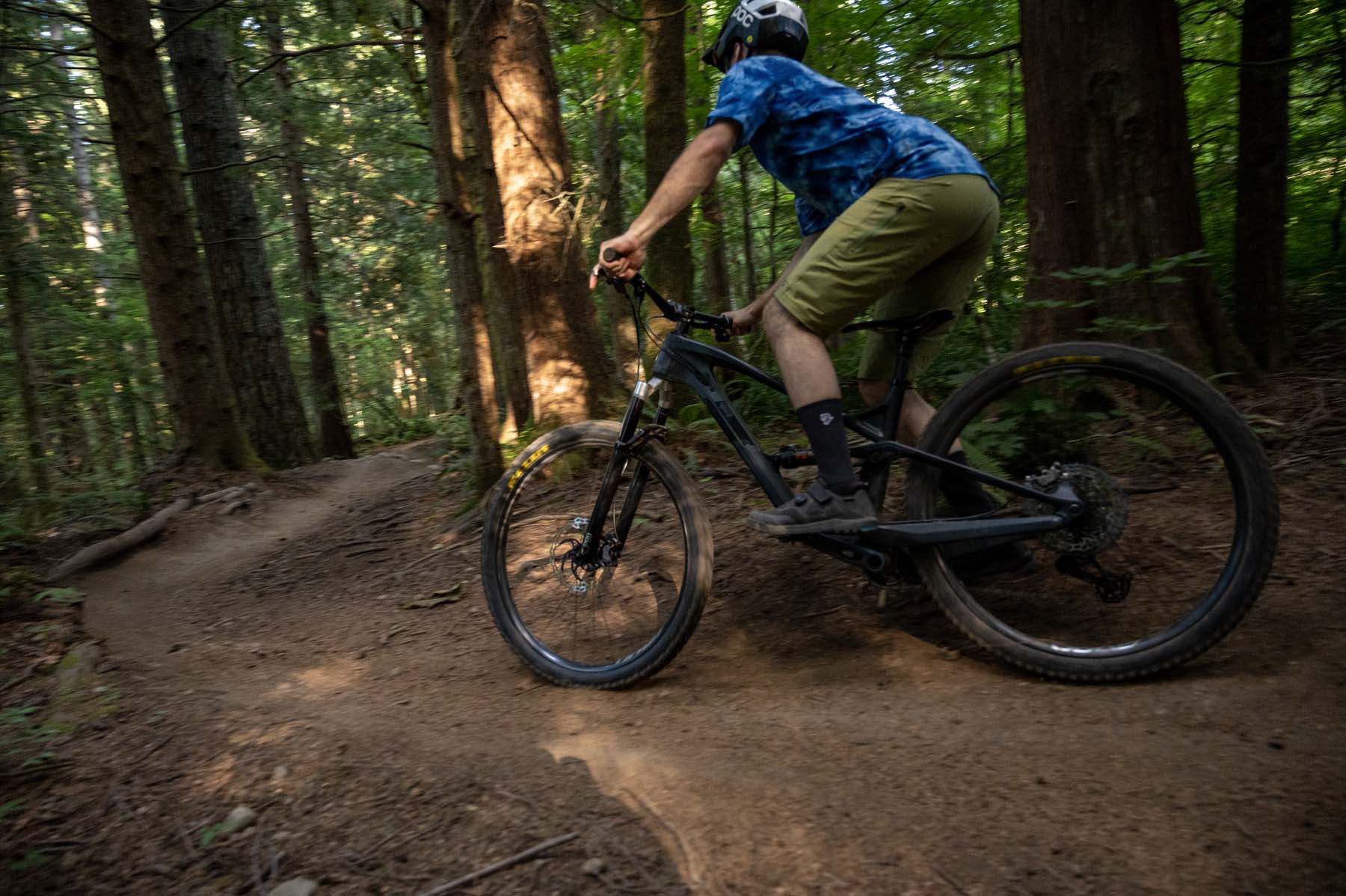
Features and Construction
First, a quick point of clarification regarding Shimano’s naming convention: the shoe reviewed here is the first iteration in the new GE9 lineage, so it’s dubbed the GE900; in theory, future versions will be named GE901, GE902, etc. I’ll mostly refer to the GE9 / ME7 / AM9 throughout, but differentiate between versions of the latter two where needed.
In terms of features and appearance, the GE9 hews a bit closer to the ME7 than the AM9, but it’s a substantial departure from both. For the new shoe, Shimano has opted to use a BOA dial as the primary closure, in place of the speed-lace system that they’ve used on a variety of shoes over the years (including the ME7 and AM9); they pair the GE9’s BOA dial with a velcro instep strap to help keep the heel locked down. The upper is constructed primarily from synthetic leather with some perforations to help with ventilation, and the GE9 feels lightly padded but less so than the AM903, especially in the tongue and inside of the ankle area.
The L6 BOA dials that Shimano uses for the main closure on the GE9 feature plastic guards that surround the forward part of the dial to help it brush off impacts and, Shimano says, avoid accidental loosening when getting smashed on stuff. When I first started wearing the GE9s, I found myself initially trying to grab the portion of the dial that was covered by the guard when I went to adjust the BOA, but I pretty quickly re-learned where to grab the dial and haven’t thought about it since. A velcro strap over the instep provides some welcome extra adjustability — I haven’t yet been thrilled with the security of the fit on a BOA-only shoe — and helps hold the heel back in its cup. Some folks will undoubtedly miss the ratcheting buckle used on the ME7 in place of the velcro strap, but I personally find the latter to be easier to adjust accurately (though the velcro itself will undoubtedly have a finite lifespan).
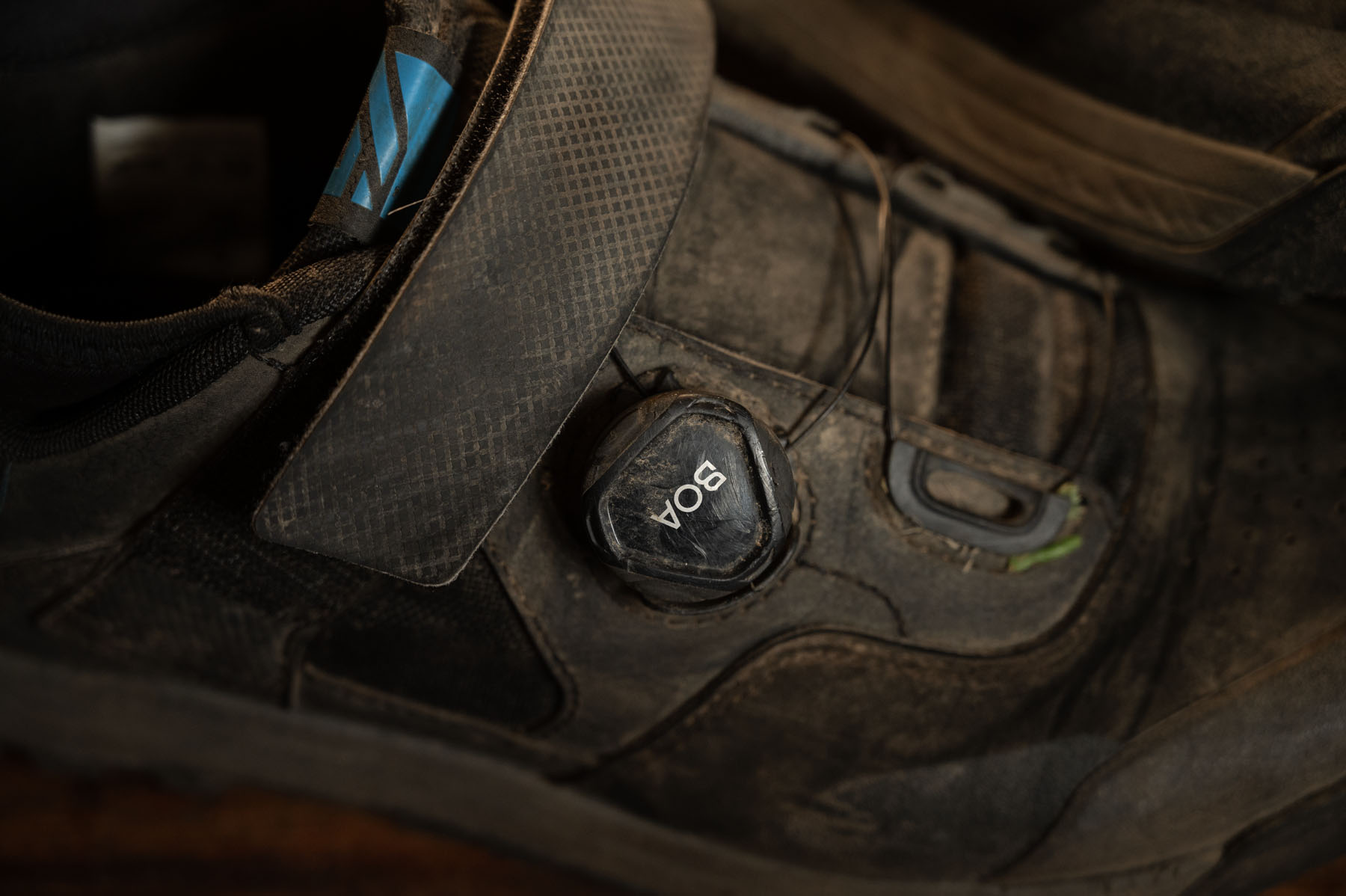
One of the defining features of the ME7 was the neoprene ankle gaiter, intended to help keep dirt and other gunk out of the shoe, and the GE9 gets a version of that as well. It’s not meant to be waterproof, but rather offer some protection from dirt, pebbles, and so on; while it’s not 100% perfect in doing so, I’ve found it to work pretty well. Sealing off the ankle area probably hampers breathability a little bit, but the GE9 is still respectable on that front — notably better than the AM9 or Specialized 2FO DH, for example.

Shimano has long graded the stiffness of their bike shoes’ soles on a numeric scale, and the GE9s clock in at a “7” (the AM9 lineup was consistently a “5,” though the later iterations were a bit stiffer than the earlier ones; the ME7 was rated an “8”). I don’t have an ME7 handy to compare against, but the GE9’s sole is indeed a good bit stiffer than that of the AM903, especially through the middle of the shoe, while being quite a bit softer than more XC-oriented shoes, such as the new Five Ten Kestrel BOA. The Specialized 2FO DH feels a little stiffer overall, and the Crank Brothers Mallet BOA is just a touch softer, but overall quite close.
The cleat slot on the GE9 is moderately long and fairly average in terms of placement, relative to most modern gravity-oriented shoes. The Endura MT500 Burner or many of Ride Concepts’ offerings are still the best options I’ve tried to date for folks who want to run their cleats super far back on the shoes, but I’ve been able to find a position that I like on the GE9s with a little wiggle room to play with (for reference, I can rarely get cleats as far back as I’d like on many more XC-oriented shoes).
Fit
The fit of the AM903 was a big part of their appeal for me — that shoe happened to fit my feet especially well. The ME7 (specifically the most recent ME702 variant), on the other hand, didn’t work nearly as well.
For reference, I’ve got notably wide forefeet and fairly square toes (i.e., my toes don’t taper / get shorter by much as you move to the outside of my feet) but my heels are quite a bit narrower. The regular-width ME702 was way too narrow in the forefoot for me; I unfortunately never got to try on the wide version to see how much that helped. The AM903, on the other hand, fit me exceptionally well, with a relatively wide forefoot and snug heel pocket that followed the contours of my foot beautifully.
The GE900 fits pretty differently from either of its predecessors. It’s more similar to the AM9 in the forefoot, but with a slightly more tapered toe box, and features a somewhat wider heel pocket. I’d personally love a slightly more snug fit in the heel for my feet, particularly when walking in the GE9s (more on that in a minute) but the fit works well for me overall. The forefoot and toe box are notably roomier in just about every direction than the standard-width ME702.
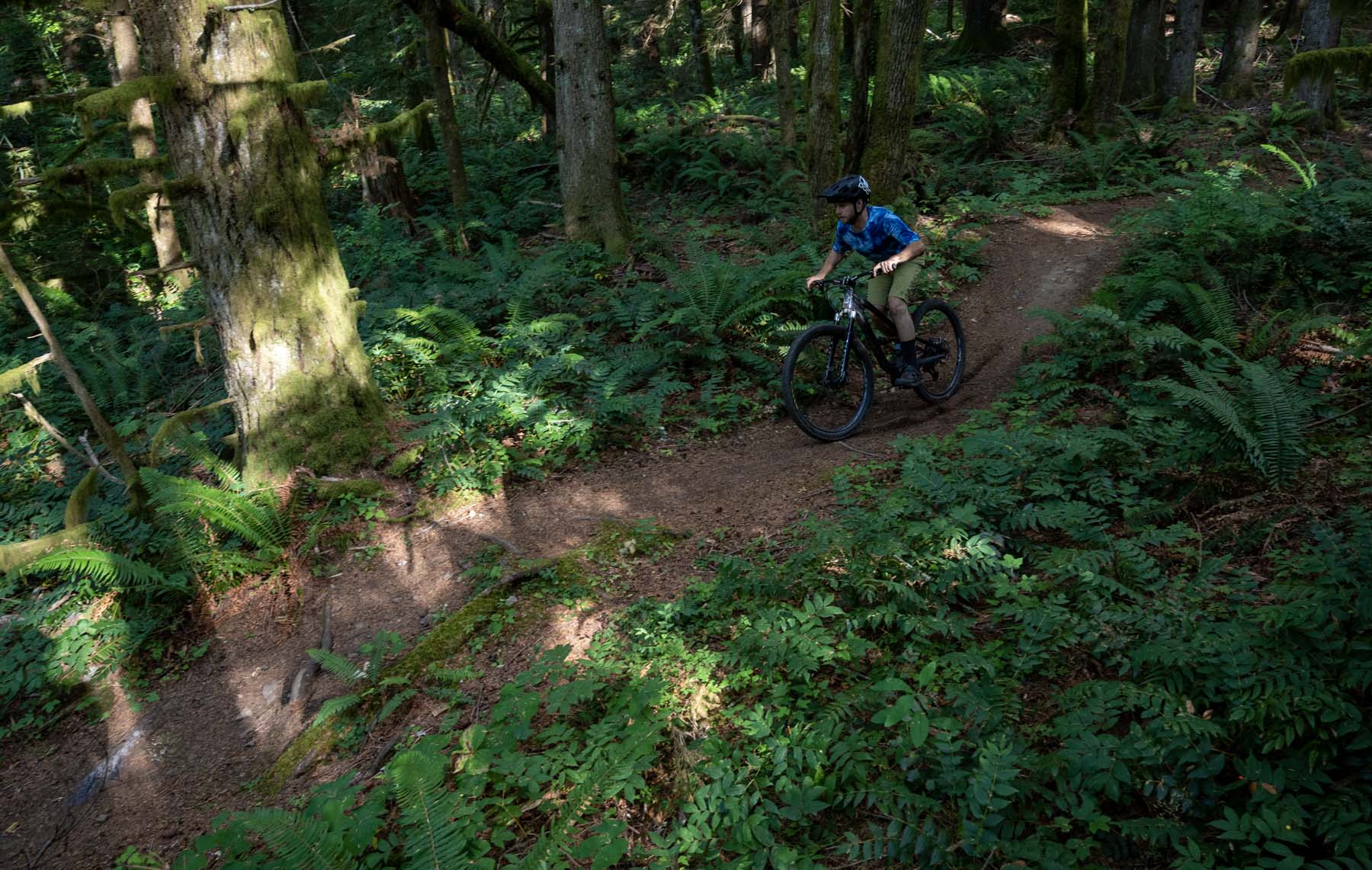
On the Bike
I tend to prefer more gravity-oriented shoes with soles on the stiffer side (for that class of shoe) for most of my riding, from Trail through DH use. And for my tastes, the GE9s work really, really well.
For me, the GE9’s sole stiffness is a nice Goldilocks level. It’s rigid enough to transfer power pretty well and feel adequately supportive when hammering through rougher terrain (where softer soles can make my feet cramp up by wrapping around the pedals too much), without feeling mega stiff and harsh.
The GE9’s sole and cleat channel have engaged extremely well with a variety of medium-to-large platform clipless pedals that I’ve tried (both Shimano’s own XTR Trail and Saint options, as well as HT X2s, X3s, and T2s). I suspect that most folks using a more XC-style pedal without any sort of extra platform will be happier with a slightly stiffer sole, but the GE9 feels nicely balanced to me when used on both Trail-oriented pedals with more moderate platforms and full-on DH options.
The torsional flex that Shimano touts in the GE9’s midsole is also apparent when descending aggressively — and I quite like it. The sole feels appropriately stiff-ish (but not punishingly so) longitudinally, with solid power transfer and a balance of support and comfort that I quite like. The outer edges of the sole, though, are less stiff and let the sole twist noticeably when leaning the bike over while cornering and the like. That subtle bit of twisting both helps the shoe’s sole engage with a larger-platformed pedal for a little extra grip and support, and helps keep the cuff of the shoe from digging into my ankles when laying the bike over or hanging off the back of it on a steeper section of trail and moving around on the bike more more dramatically.
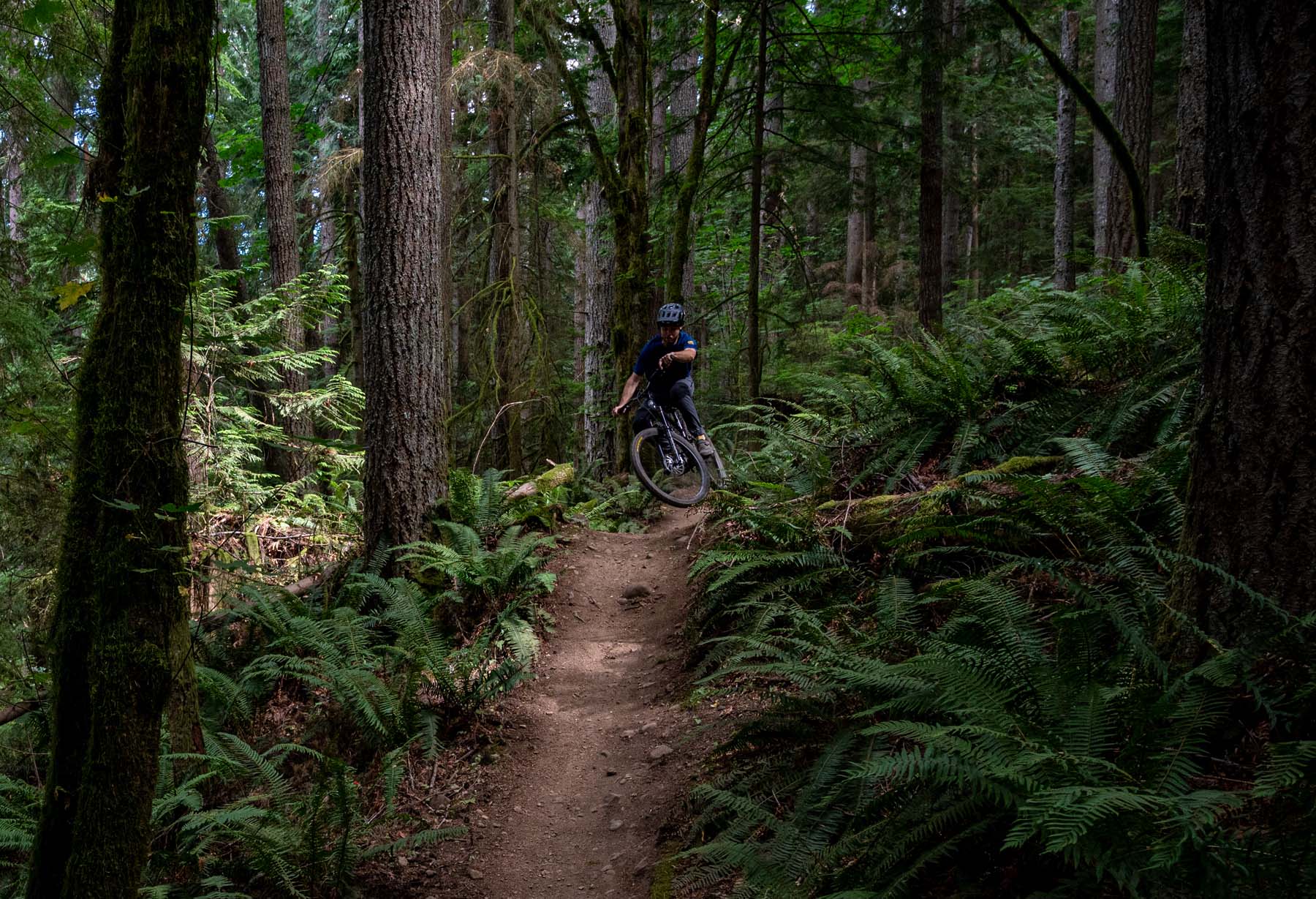
The GE9 feels about middle-of-the-road for this sort of shoe in terms of breathability and water resistance. There are more airy, breathable options out there (e.g., Crank Brothers Mallet BOA and Ride Concepts Accomplice) that run cooler but also let the elements in more readily, and some more spray-resistant but hotter ones, like the Shimano AM903 and Specialized 2FO DH. Once the GE9s do get wet, they’re a little slow to dry while being worn — I think the ankle gaiter hampers that moisture transfer somewhat — but do just fine once you take them off at the end of the day.
The rubber toe cap on the GE9 offers solid protection without being overly huge and bulky and feels fairly typical for this sort of gravity-oriented shoe. I’ve taken one notably heavy toe strike in the GE9s so far (a stump I didn’t see coming…), and while it still hurt quite a bit, I came away relatively unscathed.
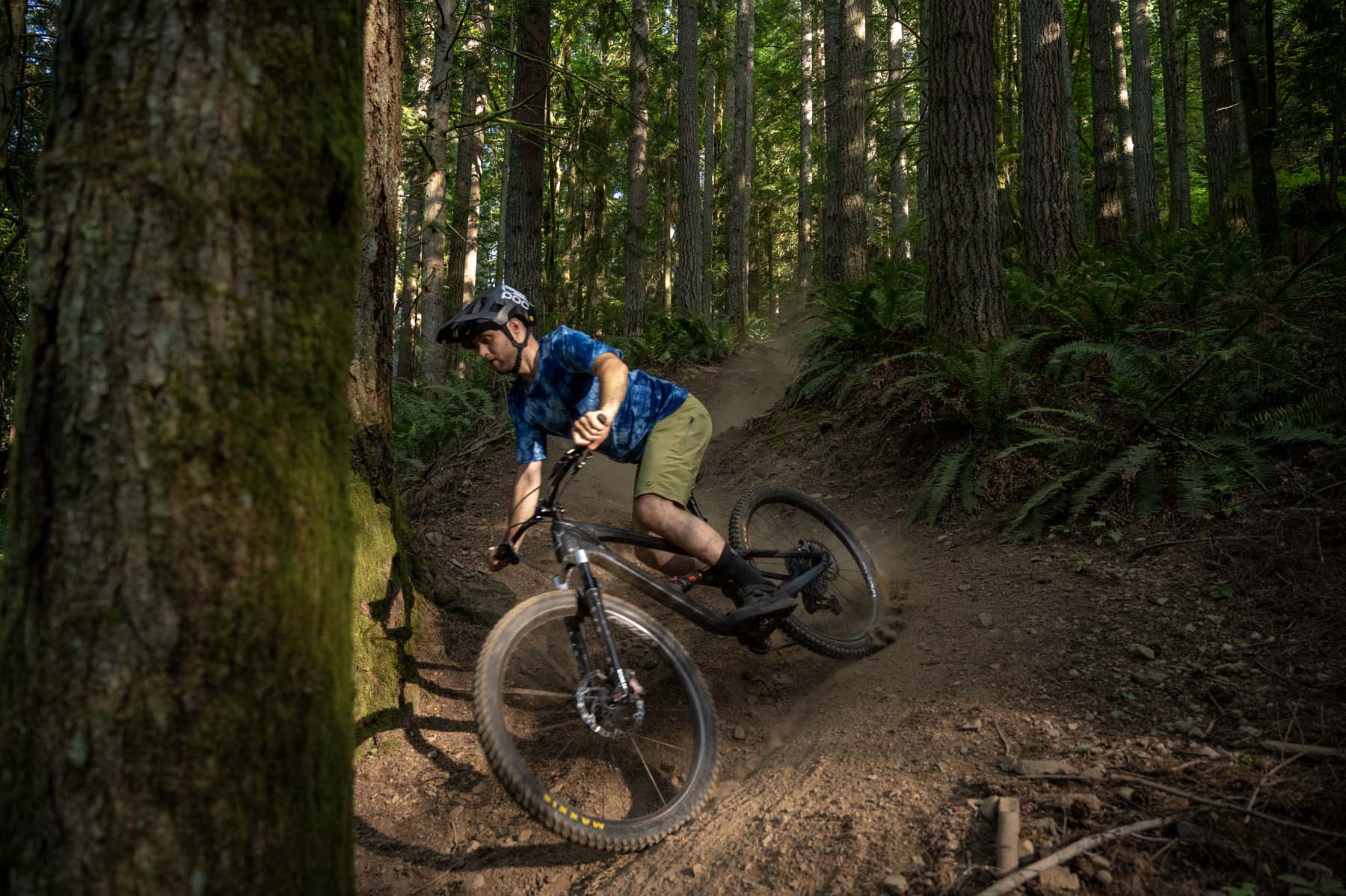
Off the Bike
The GE9s walk reasonably well for a stiff-ish clipless bike shoe. The sole softens up considerably in the toe area to help flex with your foot a bit, and the “Ultread” rubber is quite a bit stickier than the version used on the AM903. I have noticed a little bit of heel movement when walking, which isn’t a huge surprise given the not-super-snug (for my feet, anyway) heel pocket on the GE9s, but it hasn’t been bad enough to give me any blistering or other real issues.
The neoprene ankle gaiter on the GE9s also works quite well (if not 100% perfectly) for keeping debris out of the shoes when hike-a-biking, especially in loose dirt. I had wondered if it might make the shoes annoying to take on and off, or potentially chafe on longer rides, but I’ve had no such issues whatsoever.
Durability
Overall, the GE9s are holding up quite well. I was a little concerned when the inner corner of the rubber sole overlay started to peel off where it rises to cover up the EVA foam midsole near the toe (and tends to bow out as the shoe flexes when walking) after just a few rides, but it only separated by a couple of millimeters and hasn’t progressed any farther. I don’t think it’s going to cause any real issues, but I’ll keep an eye on it and report back if that changes.

Bottom Line
The new Shimano GE9 is a really good gravity-oriented clipless shoe — and one that I think I’ll keep reaching for even though I’m done with this review. The problem for Shimano is that they’ve replaced the ME7 and AM9 lines with it, and the GE9 is a good bit different from either.
Personally, I’m really happy with the changes — the GE9’s roomier forefoot fits me better than the ME7 did, and I appreciate the stiffer sole and less bulky form factor as compared to the AM9. Folks who wanted the ME7 to continue forever unchanged — and I know a few of them — won’t find an identical replacement for that old standby in the GE9, but come to it with an open mind (and maybe size down relative to the ME7 if your feet are on the narrower side), and there’s a lot to like here.

Will be interested to try these for size. I had a pair of ME701s that were a good fit, but suffered from heel lift when walking (there wasn’t much of a heel cup) and the ‘indestructible’ kevlar toe vents tore in their first week of riding in Spanish mountains.
Bought a pair of ME702 (I think) seeing they’d changed the heel cup slightly and got rid of the toe mesh.
Shimano’s PR for the 701 was that “The new ME7 Mountain Enduro race shoe receives Shimano’s unique new last design with extra toe box volume to accommodate a wider range of foot shapes without affecting shoe length. Available in both Volume+ and Volume+ Wide shoe lasts, the ME7 shoes deliver a secure wrap around the foot and comfortable fit. (also “Updated upper design for secure fit)”
but they were way too narrow across the toes and didn’t have enough volume for my high instep (ie the opposite of what they’d said). Same issue with the AM9 in that iteration too – Velcro strap barely long enough to do up over my instep.
Lots to like about this shoe – if it truly is roomier at the front, and had a decent heel cup, fit could be good (I reckon I’m like you – narrow heel, wide toes, high instep). And the neoprene cuff to keep out trail debris a good idea.
But then why get ride of the cover flap the was great at keeping trail debris (and mud spashes) from getting into your shoe around the tongue? And why lose the aggressive tread that meant had some grip when walking, and replace it with something closer to a flat pedal sole on a shoe with a cleat?
The ME7xx shoes were a great trail shoe. While everyone else wanted to make things that looked like skate or flat pedal shoes (and rubbed against your cranks), Shimano made something you could pedal all day in Moab or go shred at the bike park. I had a pair I retired with over 10k miles on them still very functional. I am riding a newer pair of me702 and they are simply perfect in terms of stiffness to flexibility ratio. They also have exceptional grip when hike-a-biking loose rocky terrain.I’d like to try the ge series but am also tempted to buy another pair of MEs before they disappear.